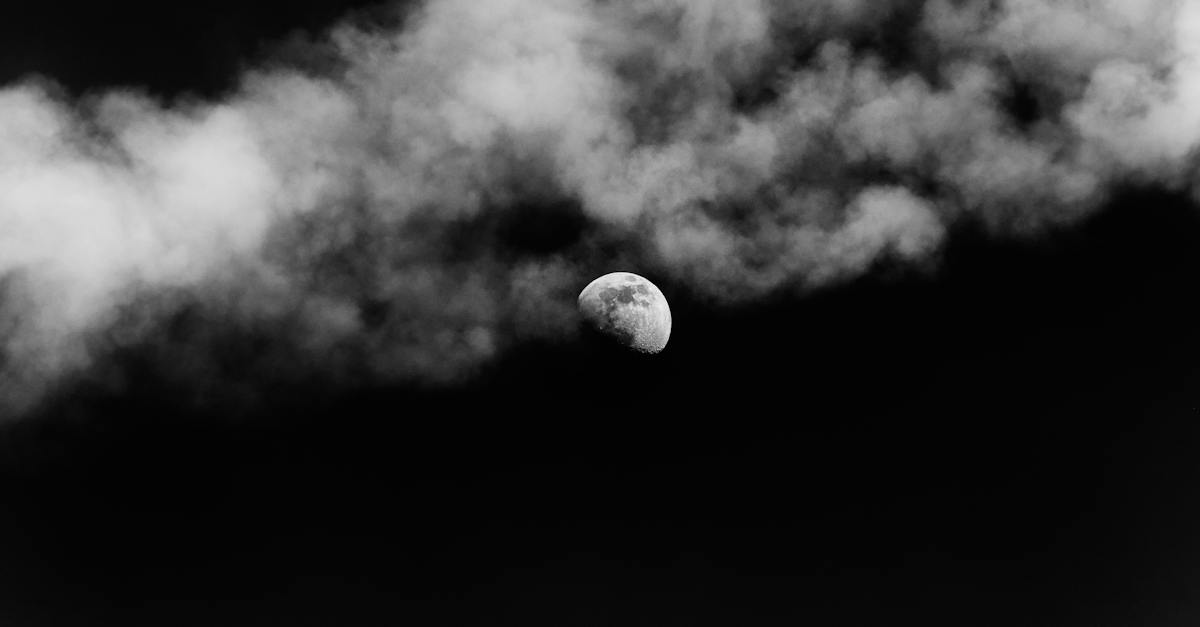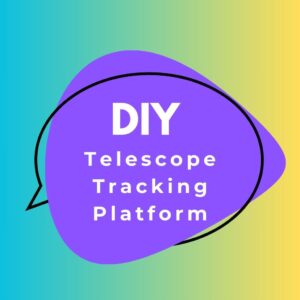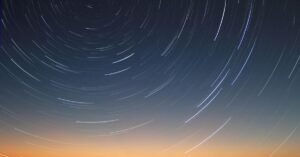This site contains affiliate links to products. I may receive a commission for purchases made through these links.
If you’re an astronomy enthusiast like me, you’ll know there’s nothing quite like observing the sun’s fiery surface. But to do that safely, you need a telescope solar filter. Now, you might be thinking, “Can’t I just buy one?” Sure, but where’s the fun in that? Plus, building your own can be a rewarding and cost-effective project.
Materials Needed
The first step in creating a custom telescope solar filter is rounding up all the necessary materials. Fortunately, these items are relatively easy to find and won’t break the bank. I’ve compiled a list of the essentials required to get this project off the ground.
To start, you’ll need a sheet of solar film. Without getting too technical, solar film is simply a thin sheet designed to safely filter sunlight as it enters your telescope. This crucial aspect of your homemade solar filter can be purchased online, or from a local astronomy shop.
Second on the list is an aluminum tube. It should be a few inches larger in diameter than the front of your telescope, providing adequate room to affix the solar film later on. This tube acts as a robust housing for the solar film and helps your filter remain sturdy during observations.
Next up is black foam board. We’ll use this to create an internal structure within the aluminium tube that helps keep the solar film secure and flat. You’ll also need a sharp knife or cutting tool to make precise cuts in the foam board.
Then, you’ll require a non-abrasive adhesive such as electricians’ tape or black plastic tape. It’s preferable to use a tape that won’t damage the solar film over time.
Last but not least, grab a tape measure, a marker, and some extra black spray paint for the finishing touches.
Here’s a cleaner look at the materials listed:
| Material | Description |
|---|---|
| Solar Film | A special sheet to filter sunlight |
| Aluminum Tube | A housing for the solar film |
| Black Foam Board | An internal support for the solar filter |
| Cutting Tool | For precise cuts in the foam board |
| Non-abrasive Adhesive | For securing the solar film |
| Tape Measure | For accurate measurements |
| Marker | For marking cuts |
| Black Spray Paint | For the finishing touches |
There we have it! Font-size: 14With these materials at your disposal, you’re one step closer to crafting your own telescope solar filter. Let’s move on to the next section.
Understanding Telescope Filters
Personal astronomy, whether it’s your hobby or something you’re looking to get into, is quite a thrilling pursuit. Our primary tool, the telescope, goes beyond simple stargazing. With the right accessories, we get the chance to witness stunning solar phenomena. Among these accessories, the lone warrior that stands between our eyes and potential solar radiation damage is the telescope solar filter.
What exactly is a telescope solar filter?
It’s a device that fits over the front end of the telescope. It works by allowing a tiny fraction of the sun’s light to pass through—about 0.001% to be exact. This permits safe observation of the sun’s surface or photosphere, including features like sunspots and solar flares.
We should know that not all telescope filters are created equal. There are two primary types to familiarize ourselves with: broadband filters and narrowband filters.
Broadband filters, sometimes called white light filters, carefully reduce the intensity of all wavelengths of light, resulting in an image of the sun that is dimmed but retains its natural color.
On the other hand, narrowband filters take a different approach. They allow only a small range of light wavelengths to pass, particularly those emitted by excited hydrogen atoms. These filters result in stunning red images of the sun and show intriguing details of its chromosphere (its outer shell).
The beauty of crafting a DIY solar filter for your telescope is the advantage of personalizing it. You can create it to fit your telescope’s specs and achieve the desired viewing experience. Equipping our telescopes with this important accessory isn’t just about safety—it’s about enriching our exploration of the vast universe.
Choosing the Right Filter Material
Stepping into the world of telescope solar filters, it’s crucial to select the appropriate filter material. Countless possibilities exist, but only a few meet the criteria for safety and optimal viewing clarity.
The top contenders in the market are Mylar, Baader Planetarium AstroSolar Safety Film, and Thousand Oaks Optical Solarlite Film. Striking a balance between safety, visual clarity, and cost-effectiveness, these films are quite popular among astronomy enthusiasts.
Mylar, a cost-effective choice, offers acceptable visual output. The sun appears white when viewed through a Mylar filter. That said, this economical filter might not be the perfect fit for serious astronomy buffs due to its relatively lesser clarity.
The Baader Planetarium AstroSolar Safety Film is my personal favorite. Despite being slightly more expensive, it compensates with exceptional visual clarity. The sun appears neutral white, making it easier to spot details like sunspots.
The Thousand Oaks Optical Solarlite Film, is another viable choice. Though it’s on the pricier side, this film delivers a natural yellow-orange hue of the sun, a favorite among many astronomers.
In addition to these, glass solar filters including Aluminized Glass Solar Filters and Hydrogen-Alpha Filters are also used. They are heavier, durable, but not advisable for a DIY project as we’re discussing here.
Here’s a quick comparison of the most popular solar filter materials:
| Filter Material | Cost | Visual Clarity | Solar Hue |
|---|---|---|---|
| Mylar | Low | Acceptable | White |
| Baader Planetarium AstroSolar Safety Film | Medium | High | Neutral White |
| Thousand Oaks Optical Solarlite Film | High | High | Yellow-Orange |
Choosing the right filter material is a peppery blend of individual preference, budget allocation, and viewing clarity requirements. So, make a pick that aligns with your personal requirements and enjoy the sun’s spectacular show safely.
Designing the Filter Frame
Let’s move on to creating a sturdy yet adjustable filter frame for your telescope. This structure holds your selected choice of material – be it Mylar, Baader Planetarium AstroSolar Safety Film, or Thousand Oaks Optical Solarlite Film – in place and ensures that the harmful solar rays don’t sneak in from the sides.
The most common route is working within the framework of a round filter attached to the front of a telescope. But flexibility in design depends on the telescope model and aperture size. You can design a friction fit solar filter frame that takes advantage of the scope’s outer rim or choose a step-down design in which the filter sits on the scope’s lip.
Material choice for your filter frame leans heavily on durability and price point. Cardboard is a popular material – it’s cheap, readily available, and easy to manipulate. Yet it may not cope well with the elements and tends to age poorly. On the other hand, I’ve seen robust plastic and metal frames that can handle challenging weather conditions but come with a steeper cost.
When it comes to designing the frame, it’s key to strictly adhere to precise measurements of your telescope’s aperture. Misaligned or mismatched filters may allow light leakage through the edges, defeating the purpose of the filter itself and potentially harming your telescope’s sensitive optics.
And there’s the attachment mechanism to consider too. Will you use clips, screws, or an adjustable band to secure your filter? Each of these methods has its own merits and drawbacks, so think about which one would work best for your setup.
I strongly recommend that you sketch out a basic design before venturing into the construction phase. It’s easier to tweak a design on paper than to disassemble a frame mid-construction. So take your time with this step and reap the rewards of a well-planned design.
Remember, a successful telescope solar filter depends as much on a sturdy, precise filter frame as on the proper filter material. It’s not something you should rush through – instead, give it the right level of thought and attention to detail, so you’ll end up with a high-quality result.
Assembling the Filter
Having chosen your frame material, measured your telescope, and sketched your design, it’s time to put it all together. Building the filter begins with cutting and forming the frame based on the drawn design. Precision is crucial in this step, as even the slightest deviation can lead to light leakage—an absolute no-no in solar viewing.
Depending on your chosen material, you might need certain tools. If you’ve chosen cardboard, a simple box cutter should suffice. For more substantial materials like metal or wood, more robust cutting tools may be necessary. Proper safety measures should be observed at all times when using these tools.
After cutting the framework, the next step is to mount the filter material. Avoid touching the surface of the solar film as fingerprints can reduce its effectiveness. Instead, handle it by its edges or use clean tweezers. Flatten the film on a clean surface, lay the frame over it, and carefully cut around it using a sharp blade.
When the filter has been cut, the next phase begins: attaching the filter to the frame. This is done by taping or gluing the filter material to the frame using adhesive that doesn’t react with the filter material. Always remember to test the adhesive first. A sneak peek at what the assembly process looks like in percent:
| Steps | Progress (%) |
|---|---|
| Select and cut frame | 30% |
| Mount filter material | 60% |
| Attach filter to frame | 100% |
The last piece of the assembly puzzle is to fix the assembled filter onto the telescope. This is where the type of attachment mechanism you’ve chosen comes in: screws, clips, or adjustable bands. Ensure you securely attach your filter to avoid any risk of falling off or shifting during use.
That’s how you give life to your carefully sketched design. Stick around as we delve further into testing and safety measures in the following section.
Testing and Adjustments
After you’ve meticulously assembled your custom telescope solar filter, it’s time to test it out. Now, remember, safety is paramount when dealing directly with solar viewing. Never look directly at the sun without an approved and properly installed solar filter.
Starting simple: daylight tests. Place your newly made filter securely onto your telescope and aim the device towards a well-lit, non-reflective object in the distance. This step will ensure there’s no light leakage around the filter’s edges, which would be especially visible against a bright backdrop. Tighten or adjust your attachment mechanisms as necessary for this.
If you’re using a Dobsonian telescope or any other reflector style, checking the filter alignment is crucial. Sit it on the top edge of your scope and ensure it doesn’t obstruct the light path. Minor adjustments might be necessary for proper fitting.
An integral part of testing is to scrutinize your views carefully. Is your solar view clear and detailed, with no signs of strain or unease? The sun should appear in a pleasing, neutral white tone without any notable color casting.
Finally, under no circumstances should you observe the sun using a solar filter if it’s damaged. Inspect for any pinholes, scratches, or rips. A convenient method for checking damage is the torchlight test – Hold the filter under a bright flashlight and look for any light penetration through the filter material. If so, it’s a sign the filter isn’t safe to use.
In the following section, we’ll be discussing further on recording and analyzing your solar observations, thus being able to tell a grainy filter from a top-quality one.
Conclusion
Building a telescope solar filter isn’t just about assembly. It’s about ensuring safety, conducting thorough tests, and making necessary adjustments. I’ve highlighted the importance of daylight tests to spot any light leakage and verify secure attachment. For those using reflector style telescopes, remember to check filter alignment. Observing the sun’s detail and clarity is crucial, but never risk using a damaged filter. I’ve provided a method to check for any damage. Now that you’re equipped with the knowledge to build and test your own telescope solar filter, you’re ready to embark on your journey of solar observations. Stay tuned, as I’ll be diving into how to record and analyze these observations in my next post.
What is the main focus of the article?
The article mainly focuses on the testing and adjustments process after assembling a custom telescope solar filter. It accentuates the significance of safety and the requirement of performing daylight tests to check for light leakage and proper attachment.
What does the article say about daylight tests for the telescope solar filter?
Daylight tests are highly encouraged in the article to ensure safety while using the custom-made solar filter. These tests help in detection of light leakage and test the filter’s proper attachment.
How is filter alignment important according to the article?
The article draws attention to the necessity of checking the filter alignment for reflector style telescopes. Misalignment may lead to the impairment of viewing clarity and detailing in solar views.
What precautionary note does the article mention regarding the solar filter’s usage?
The article warns against using a damaged filter, as it can be potentially unsafe. It provides a checking method to detect any damage in the filter to steer clear of possible viewing risks.
What should the readers expect in the following section of the article?
The succeeding section of the article, as hinted, will delve into the recording and analyzing aspect of solar observations. It will guide the reader on how to make the most of their custom telescope solar filter.




